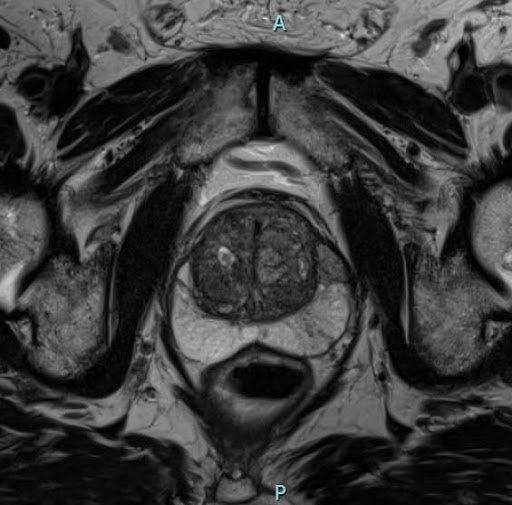BACKGROUND
According to the latest American Cancer Society statistics, about 1 in 8 men will be diagnosed with prostate cancer during their lifetime. Aside from skin cancer, prostate cancer is the most diagnosed cancer in men in the United States. It is more commonly detected in older men and non-Hispanic Black males, and a family history of this cancer can also heighten the likelihood of developing the condition.
While the rate of prostate cancer cases may sound alarming, it is encouraging to know that newer technologies like Prostate MRI are dramatically improving the way we view and diagnose prostate cancer.
WHO SHOULD HAVE A PROSTATE MRI?
Prostate MRI has been shown to be very helpful in the management of patients with suspected or already diagnosed prostate cancer. The most common situations to obtain an MRI of your prostate include:
Screening for prostate cancer
Staging a known prostate cancer
Following prostate cancer in patients undergoing active surveillance
SCREENING FOR PROSTATE CANCER
Screening for prostate cancer is one of the most common reasons for your doctor to order a prostate MRI. If you have a blood test showing an elevated or changing PSA value, your doctor may choose to obtain a repeat blood test later or consider other options to evaluate for prostate cancer, such as a biopsy or MRI.
You should keep in mind that an abnormal or elevated PSA value does not necessarily mean you have prostate cancer. Your PSA value can become elevated if you have a large prostate gland or if you have inflammation or an infection in the area. There is no specific PSA level below which prostate cancer can be entirely excluded.
Several major published studies over the past several years (2,3) have demonstrated that using prostate MRI may prevent around 30% of unnecessary prostate biopsies. All while helping find more “clinically significant” prostate cancer and avoiding the detection of “clinically insignificant” cancer that may not affect the patient’s health.
STAGING A KNOWN PROSTATE CANCER
If you have undergone a biopsy that revealed prostate cancer, your doctor may choose to obtain MRI prior to treatments like radiation therapy or surgery to perform “staging.” This means using MRI to evaluate the size and location of the cancer before determining if it has spread outside of the prostate “capsule” or into any adjacent organs such as the seminal vesicles.
This is important information that can affect what type of treatment is recommended, how to optimally remove or treat all the tumors, and how to determine your prognosis.
ACTIVE SURVEILLANCE
Active surveillance is sometimes referred to as the “watch and wait” treatment. This means your doctor thinks you have a “low-grade” cancer that may never need treatment or affect your health during your lifetime.
After decades of medical evidence, it is now known that many prostate cancers do not harm an individual during their lifetime if left alone. However, determining which prostate cancers can be watched versus which ones should be promptly treated can be challenging.
Prostate MRI plays a role in determining which cancers are more likely to need treatment. MRI is helpful to demonstrate whether the cancer may be a “higher-grade” or more aggressive than originally thought based on the initial biopsy. Also, we commonly perform annual follow-up MRI exams to see if the known cancer is changing in any concerning way that would prompt your doctors to initiate treatment.
WHAT TO EXPECT
Before the exam:
Prior to your appointment, you will need to answer some questions to confirm that MRI is safe for you and that you are directed to the best machine for your needs. It is important to let the scheduler know if you have any implanted medical devices or metallic foreign bodies so we can determine how best to perform your examination.
Occasionally, we require an additional imaging exam or medical document review to make sure the MRI is safe for you. You will also be asked whether you have kidney disease since the examination is ideally performed utilizing intravenous contrast. The contrast is safe for almost everyone, but if you are on dialysis, we may perform the study without contrast.
During the exam:
The examination takes between 20 to 30 minutes to complete. You will be asked to change into a medical gown that is provided and will have a final screening process prior to entering the MRI room.
It is very important that metal objects are left outside of the room unless approved, and that you answer the technologist’s questions accurately. During the examination, you will wear headphones to muffle any loud sounds from the MRI machine and will lie on your back while the technologist completes the test. Most patients find the MRI to be an easy, and sometimes relaxing, exam.
In the past, some patients with claustrophobia were unable to complete the exam. However, our Open-Bore MRI machines have the largest opening available in the industry, making it an uncommon to rare situation that someone cannot perform the exam unless the condition is severe. If you are concerned about your comfort during the test, you should inform the scheduler when making the appointment and we will make sure to allow more time to assist you during the exam.
Why choose Radiology Associates Imaging Centers for your exam?
Our state-of-the-art outpatient imaging centers have been performing Prostate MRI for over a decade. We complete thousands of these exams yearly, making us one of the highest-volume imaging centers in Florida.
Additionally, we use the most advanced MRI technology and imaging techniques to perform the study so you can find comfort in knowing that you are always getting the best examination possible.
The technical part of the MRI is only one aspect of obtaining a high-quality examination. Possibly the most important piece is the interpreting radiologist who is reviewing your images. At our centers, we use a select group of specially trained radiologists to interpret these exams to offer the best accuracy and consistency. Our radiologists are required to follow all the reporting guidelines set forth by the American College of Radiology, known as PI-RADS, which is the standard of care in prostate cancer imaging.
Written By Dr. John Gianini
References:
American Cancer Society website: https://www.cancer.org/cancer/prostate-cancer.html (Last accessed 4/7/2023)
MRI-targeted or Standard Biopsy for Prostate-Cancer Diagnosis. New England Journal of Medicine 2018; 378: 1767-1777.
Role of pre-biopsy multiparametric MRI in prostate cancer diagnosis: Evidence from the literature. Turk J Urology 2021 Feb; 47 (Supp 1): S65-S70.


